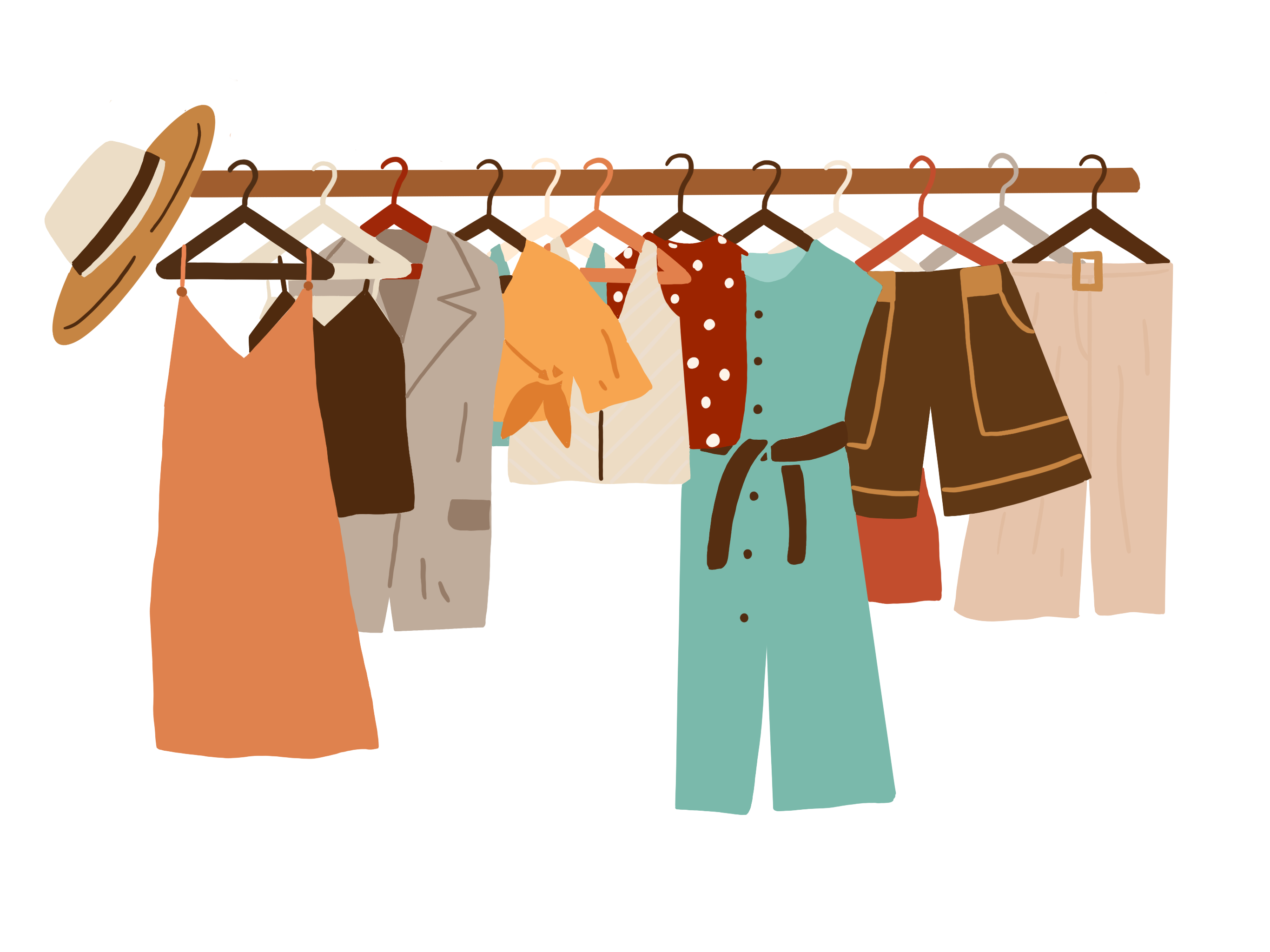Sunday, May 4
To Thrift or Not to Thrift
Mira Ponnambalam '26 (145th Editor-in-Chief) in Arts | April 21, 2023

In the current fashion industry, fast fashion is king; however, fast fashion promotes the overconsumption of clothes as the clothing is cheap and not made to last, helping people keep up with rapidly changing trends—which can be difficult without buying from fast fashion companies—so a lot of young people love it. Shein, Zara, Forever 21, and other fast fashion brands push out thousands of new items every day, certainly taking a toll on the environment. According to BBC, fast fashion accounts for up to 10 percent of all carbon emissions. A new fashion trend, however, has grown in popularity to usurp fast fashion’s throne: the supposedly more sustainable thrifting.
Thrifting, buying second-hand clothes at a low price, has grown in popularity in recent years, with the market expected to grow 127 percent by 2026, according to ThredUp. The trend has taken root on social media, where thrifting hauls and upcycling second-hand clothing have become common. Its popularity can partially be attributed to the guiltlessness of buying cheap clothes sustainably.
Defenders of thrifting point out that buying second-hand stops clothes from ending up as waste and that not buying new clothes eliminates the water footprint, energy use, and pollution caused by the production. It’s a sustainable alternative to fast fashion—or so people claim.
In reality, thrifting feeds off the fast fashion market and isn’t all that sustainable. Thrifting doesn’t actually reduce the amount of clothing in circulation, which is essential for reducing the fashion industry's environmental impact. Instead of preventing people from quickly buying and disposing of clothing to keep up with trends, it allows people to do so guiltlessly, cheaply, and easily because people can swap out their entire wardrobes through thrift stores. Popular Science mentions that “80 percent [of donated clothes are] shipped to other countries like Poland, Pakistan, and Kenya or turned into rags or post-consumer fibers,” and the process of recycling textiles uses a lot of energy. Shipping the clothes to other countries also expends energy and damages the economies of the countries where the clothes are sent. Therefore, while thrifting in moderation provides an environmentally friendly way to buy clothing, with its popularization and the impact of the fast fashion industry on the rate at which people buy and sell clothes, it's ultimately unsustainable.
Thrifting isn’t without its moral downfalls either. For a long time, thrift stores were exclusively used by people who could not afford clothes otherwise. With the popularization of thrifting among the middle and upper-class, more second-hand stores have emerged, driving up competition and prices. Through the process of thrift store gentrification, people who previously relied on thrift stores can no longer afford to buy the clothes they need to survive.
Despite its unsustainable connection to fast fashion and its gentrification harming people who rely on thrift stores, in the short term, thrifting ultimately does reduce the fast fashion market and waste from clothing. If shoppers carefully regulate their habits so that they don’t harm others or the environment, thrifting can make a lasting impact on the fashion industry’s environmental influence.
Related Articles
- Mirror, Mirror, on the Wall... Who’s the Most Hated of Them all? Melina Kyriakopoulos ’27
- L Factor or L moment? Lawrentians Take the Stage Celestine Sutter ’27
- Spring Orchestra Concert Vincent Jie ’27
- Shedding Light on Julius Caesar Anton Popowitz ’26
- Threaded Up Thursdays: Intertwining Soul and Style Melina Kyriakopoulos ’27
Recent Articles
- Announcing: Valedictorian, Aurelian Speakers, and Faculty Speaker Sophie Liu ’27
- Senior Profile: Sophie Cheng ’25 Katherine Qiu ’27
- Debunking the Dining Hall Debate: Is Lawrenceville’s Dining Really That Bad? Isabelle Lee ’27
- Welcoming Our New VPs for 2025-2026 Sophie Liu ’27
- A Sweet Return: Melba Reopens with New Flavors and Community Spirit Ella Song ’27